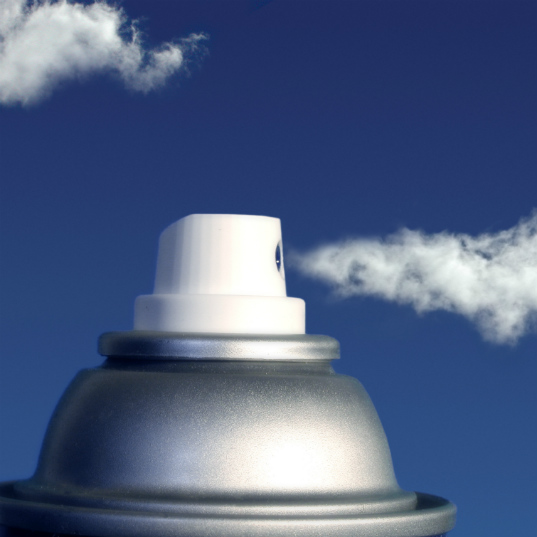In the mid-Seventies, a group of scientists warned about the gradual destruction of the ozone layer that protects the planet from ultraviolet radiation. In 1985, an article in Nature magazine by British Antarctic Survey scientists alerted that a hole had appeared in the ozone layer over the South Pole, where the gas had been reduced by 50%. From this moment on, the hole in the ozone layer became a crucial question in the fight to conserve the environment.
Why had this ozone gas diminished? The main cause was the growing use of chlorofluorocarbons, known as CFCs, which was provoking more ozone loss than was being formed, lowering its concentration. CFCs consisted of chemical substances that were used in everyday items such as refrigeration devices (domestic fridges, air conditioning, industrial freezers) and aerosols (deodorants, spray paint, insecticides, lacquers, etc.).
As well as CFCs, of which 12 different types exist, there are other gases of human origin that endanger the ozone layer, such as methyl chloroform (used in paints and solvents), carbon tetrachloride (present in pesticides, fire extinguishers and bleaches) and substances made of bromine, such as halons, used, for example, to put out fires.
Why damaging the ozone layer is dangerous
Ozone concentration is present in 90% of the upper layers of the atmosphere and is essential for the development of life, since it filters all ultraviolet radiation. This vital function for life on earth prevents us from being over-exposed to the ultraviolet rays which will harm our health.
The ozone layer protects human beings and other species from diseases such as skin cancer, melanomas, cataracts in the eyes and suppression of the immune system. Its destruction also damages crops sensitive to ultraviolet radiation.
Montreal Protocol, a turning point
Two decades ago, in 1987, an international pact known as the Montreal Protocol represented a milestone in global environmental policy, a unanimous agreement to reduce production and consumption of the noxious substances destroying the ozone layer.

Since it entered into force in 1989, CFCs have mainly been replaced by HCFCs (hydrochlorofluorocarbons), which although these also have a negative impact on the greenhouse effect, at least they do not damage the ozone layer.
The Montreal Protocol is considered one of the great successes of international cooperation in fighting to conserve the environment, and is a clear example of how a global pact can incentivize countries to continue working together.
The ozone layer is recovering
Thanks to the measures adopted in the Montreal Protocol, the ozone layer is recovering. According to a report by MIT (Massachusetts Institute of Technology), since the year 2000, the moment at which the ozone concentration fell to its lowest in history, the hole has reduced by four million square kilometres.
The scientific community estimates that, if it continues this rate of recovery, in 2050 the hole will have completely closed, i.e. the concentration of ozone gas will have returned to be the same over the South Pole as before human action provoked its change.
Paradoxically, according to UNEP (the United Nations Environment Programme), if the Montreal Protocol had not been signed, in 2050 the hole in the ozone layer would have grown ten times bigger than at the time it was discovered.
To raise awareness on the importance of caring for the ozone layer, every 16 September the global community celebrates the International Day for the Preservation of the Ozone Layer.
Sources: PNUMA, PNUMA II, World Meterological Organization, EFE Verde, El País, Vix and Color Abc.